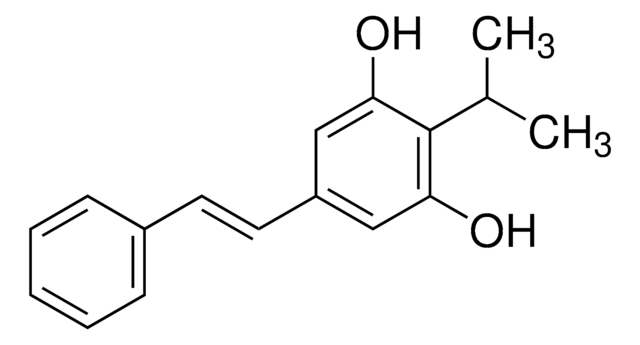48599
2,3,7,8-Tetrachlorodibenzo-p-dioxin solution
analytical standard
Synonym(s):
2,3,7,8-TCDD
Sign Into View Organizational & Contract Pricing
All Photos(1)
About This Item
Recommended Products
grade
analytical standard
CofA
current certificate can be downloaded
packaging
ampule of 1 mL
storage temp.
2-8°C
InChI
1S/C12H4Cl4O2/c13-5-1-9-10(2-6(5)14)18-12-4-8(16)7(15)3-11(12)17-9/h1-4H
InChI key
HGUFODBRKLSHSI-UHFFFAOYSA-N
General description
2,3,7,8-Tetrachlorodibenzo-p-dioxin is a highly distributed environmental contaminant, released by industrial activities, which can act like as a reproductive toxicant and endocrine disruptor in all vertebrates.
2,3,7,8-Tetrachlorodibenzo-p-dioxin is the most potent congener of dioxins and dioxin-like chemicals, which can exert adverse effects in laboratory animals used in testing.
Application
2,3,7,8-Tetrachlorodibenzo-p-dioxin solution has been used as standard in investigating the effect of 2,3,7,8-Tetrachlorodibenzo-p-dioxin to offsprings of fish, using high performance gas chromatography coupled with high performance mass spectrometry (HPGC-HPMS).
Refer to the product′s Certificate of Analysis for more information on a suitable instrument technique. Contact Technical Service for further support.
Signal Word
Danger
Hazard Statements
Precautionary Statements
Hazard Classifications
Aquatic Chronic 1 - Asp. Tox. 1 - Flam. Liq. 2 - Repr. 2 - Skin Irrit. 2 - STOT RE 2 - STOT SE 3
Target Organs
Central nervous system
Storage Class Code
3 - Flammable liquids
WGK
WGK 3
Flash Point(F)
39.2 °F - closed cup
Flash Point(C)
4 °C - closed cup
Choose from one of the most recent versions:
Already Own This Product?
Find documentation for the products that you have recently purchased in the Document Library.
K A Solak et al.
Toxicology, 311(3), 124-134 (2013-07-23)
The aryl hydrocarbon receptor (AhR) is involved in a wide variety of biological and toxicological responses, including neuroendocrine signaling. Due to the complexity of neuroendocrine pathways in e.g. the hypothalamus and pituitary, there are limited in vitro models available despite
E C Rada et al.
Chemosphere, 110, 53-61 (2014-06-02)
Atmospheric depositions of polychlorinated dibenzo-p-dioxins and dibenzofurans (PCDD/Fs) and polychlorinated biphenyls (PCBs) were monitored at three sites in the vicinity of a steel making plant, located in an Italian alpine valley. A high variability in the deposition of PCDD/Fs was
Filomena Fiorito et al.
Toxicology, 290(2-3), 258-270 (2011-10-22)
The administration of 2,3,7,8-tetrachlorodibenzo-p-dioxin (TCDD) to a variety of cultured cells may alter their ability to proliferate and die. In a previous study we demonstrated that TCDD induced proliferation in Madin-Darby Bovine Kidney (MDBK) cells where no signs of apoptosis
Maria Herlin et al.
Toxicology and applied pharmacology, 273(1), 219-226 (2013-09-17)
Bone is a target for high affinity aryl hydrocarbon receptor (AHR) ligands, such as dioxins. Although bone morphology, mineral density and strength are sensitive endpoints of dioxin toxicity, less is known about effects on bone microarchitecture and material properties. This
Tomoki Takeda et al.
Molecular pharmacology, 85(1), 74-82 (2013-10-18)
Our previous studies have shown that treatment of pregnant rats with 2,3,7,8-tetrachlorodibenzo-p-dioxin (TCDD; 1 μg/kg) at gestational day (GD) 15 reduces the pituitary synthesis of luteinizing hormone (LH) during the late fetal and early postnatal period, leading to the imprinting
Our team of scientists has experience in all areas of research including Life Science, Material Science, Chemical Synthesis, Chromatography, Analytical and many others.
Contact Technical Service

![Benzo[a]pyrene ≥96% (HPLC)](/deepweb/assets/sigmaaldrich/product/structures/253/820/be96d879-1811-46c0-8f11-612019691c2d/640/be96d879-1811-46c0-8f11-612019691c2d.png)










